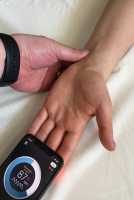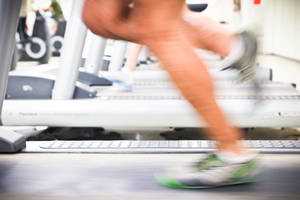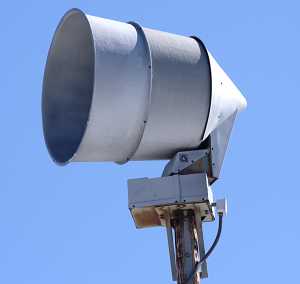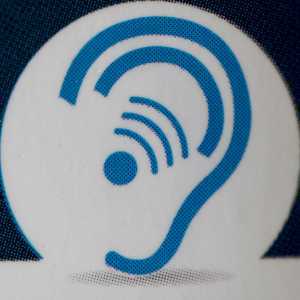Author Interviews, CMAJ, Heart Disease, Technology / 03.04.2018
Smartphone App Bests Clinical Assessment of Blood Flow
MedicalResearch.com Interview with:
Benjamin Hibbert MD PhD FRCPCz
Interventional Cardiologist
Clinician Scientist and Assistant Professor
CAPITAL Research Group
Vascular Biology and Experimental Medicine Laboratory
University of Ottawa Heart Institute
MedicalResearch.com: What is the background for this study? What are the main findings?
Response: When we designed the study in 2014 we were routinely using the modified allen's test (MAT) to screen patients for transradial access for coronary angiography and PCI. We all had iPhones and we started using the HeartRate monitoring application as a photoplethysmograph. Quite quickly we found that using the application was simple, worked well and because we always had our iPhone with us we tended to use it more often. That being said - we wanted to test it in a scientifically rigorous method and thus we elected to perform an RCT to evaluate it's diagnostic accuracy.
 The current study is the first to use the photoplethysmographic capabilities of smartphones to assess blood flow - in this case in the hand to assess for blockages in arteries before accessing them for a procedure. The hand is supplied by two arteries - the radial artery and the ulnar artery. In many cases in medicine we use the radial artery, whether it be placing a catheter to monitor blood pressure, as a method of getting to the heart for angioplasty and in coronary artery bypass grafting it is removed and used as a bypass to restore blood flow to the heart. In many instances doctors assess the patency of the ulnar artery to decided if they are going to use the radial artery for a procedure - the concept being that if the ulnar is compromised and we use the radial then the hand can develop complications from not enough blood flow. To determine if a patient is eligible doctors would use a bedside physical exam test called the modified Allen's test in which they occlude both arteries to cause the hand to turn white. They then release pressure on the ulnar letting blood only pass through this vessel to see if the hand turns pink. However, there is a lot of variability in what doctors consider to be abnormal and determining if the test is positive can depend on numerous factors including skin tone, the amount of pressure applied and the size of the vessels. (more…)
The current study is the first to use the photoplethysmographic capabilities of smartphones to assess blood flow - in this case in the hand to assess for blockages in arteries before accessing them for a procedure. The hand is supplied by two arteries - the radial artery and the ulnar artery. In many cases in medicine we use the radial artery, whether it be placing a catheter to monitor blood pressure, as a method of getting to the heart for angioplasty and in coronary artery bypass grafting it is removed and used as a bypass to restore blood flow to the heart. In many instances doctors assess the patency of the ulnar artery to decided if they are going to use the radial artery for a procedure - the concept being that if the ulnar is compromised and we use the radial then the hand can develop complications from not enough blood flow. To determine if a patient is eligible doctors would use a bedside physical exam test called the modified Allen's test in which they occlude both arteries to cause the hand to turn white. They then release pressure on the ulnar letting blood only pass through this vessel to see if the hand turns pink. However, there is a lot of variability in what doctors consider to be abnormal and determining if the test is positive can depend on numerous factors including skin tone, the amount of pressure applied and the size of the vessels. (more…)
 The current study is the first to use the photoplethysmographic capabilities of smartphones to assess blood flow - in this case in the hand to assess for blockages in arteries before accessing them for a procedure. The hand is supplied by two arteries - the radial artery and the ulnar artery. In many cases in medicine we use the radial artery, whether it be placing a catheter to monitor blood pressure, as a method of getting to the heart for angioplasty and in coronary artery bypass grafting it is removed and used as a bypass to restore blood flow to the heart. In many instances doctors assess the patency of the ulnar artery to decided if they are going to use the radial artery for a procedure - the concept being that if the ulnar is compromised and we use the radial then the hand can develop complications from not enough blood flow. To determine if a patient is eligible doctors would use a bedside physical exam test called the modified Allen's test in which they occlude both arteries to cause the hand to turn white. They then release pressure on the ulnar letting blood only pass through this vessel to see if the hand turns pink. However, there is a lot of variability in what doctors consider to be abnormal and determining if the test is positive can depend on numerous factors including skin tone, the amount of pressure applied and the size of the vessels. (more…)
The current study is the first to use the photoplethysmographic capabilities of smartphones to assess blood flow - in this case in the hand to assess for blockages in arteries before accessing them for a procedure. The hand is supplied by two arteries - the radial artery and the ulnar artery. In many cases in medicine we use the radial artery, whether it be placing a catheter to monitor blood pressure, as a method of getting to the heart for angioplasty and in coronary artery bypass grafting it is removed and used as a bypass to restore blood flow to the heart. In many instances doctors assess the patency of the ulnar artery to decided if they are going to use the radial artery for a procedure - the concept being that if the ulnar is compromised and we use the radial then the hand can develop complications from not enough blood flow. To determine if a patient is eligible doctors would use a bedside physical exam test called the modified Allen's test in which they occlude both arteries to cause the hand to turn white. They then release pressure on the ulnar letting blood only pass through this vessel to see if the hand turns pink. However, there is a lot of variability in what doctors consider to be abnormal and determining if the test is positive can depend on numerous factors including skin tone, the amount of pressure applied and the size of the vessels. (more…)









